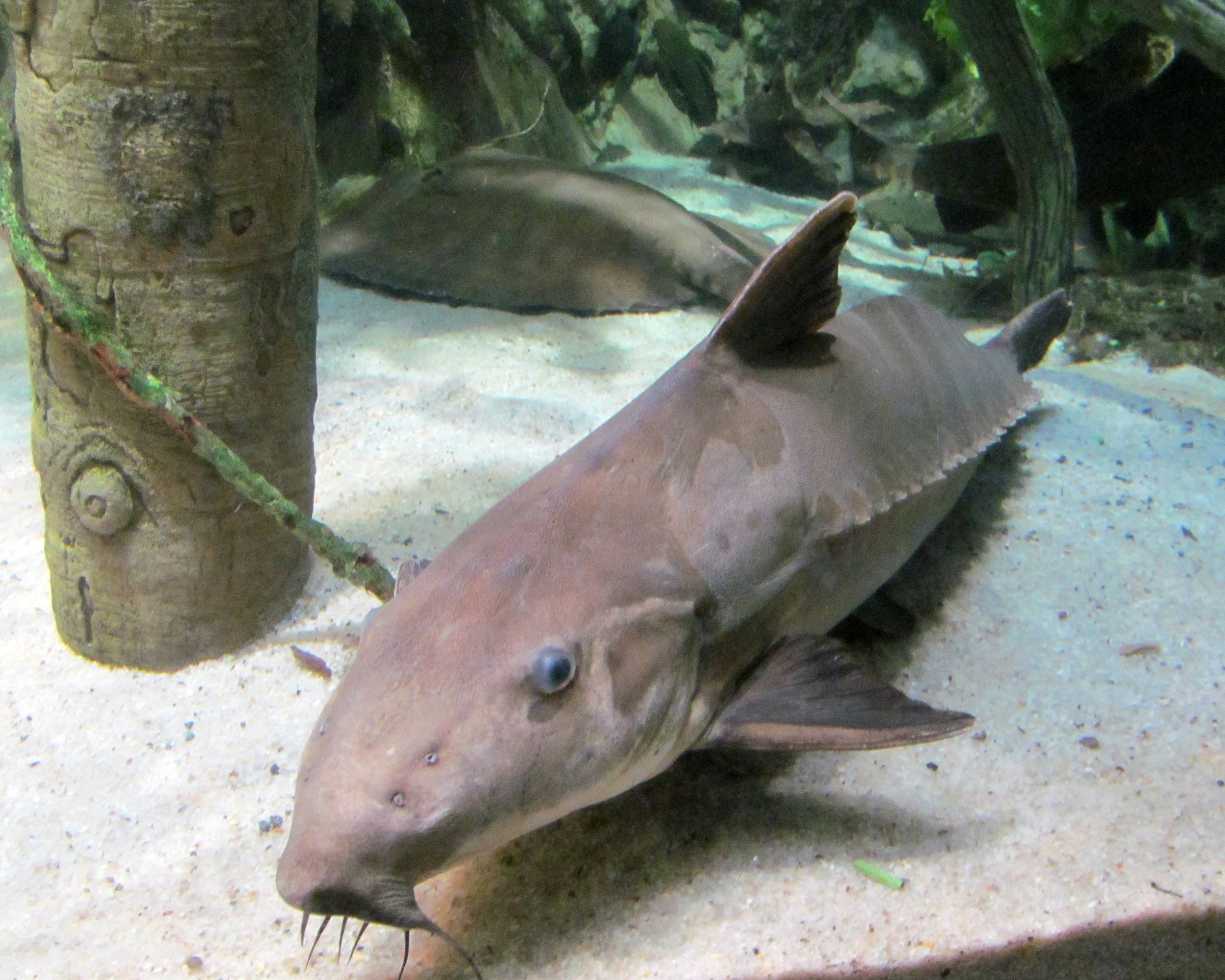Armored Catfish
Callichthys callichthys, the cascarudo, armored catfish, bubblenest catfish, hassar, or mailed catfish, is a subtropical freshwater fish belonging to the subfamily Callichthyinae of the family Callichthyidae.
The fish will grow in length up to eight inches (20 centimeters). The females are larger and more robust, and are a dull olive-green, while the males are brighter in color, exhibiting a delicate blue or violet sheen laterally, with a more developed and longer pectoral fin spine that is reddish-brown and edged with orange or reddish-orange.
It lives in a variety of water types, from anoxic conditions (slack water zones surrounded by dense vegetation) to slightly turbid, but free-flowing, streams. It can be found in waters with pH range of 5.8 to 8.3, a water hardness of 0–30dGH, and a temperature range of 64–83 °F (18–28 °C). When its biotype becomes dry, it can move out of the water, due to its ability to swallow air and use its intestines to absorb oxygen from the atmosphere, to find more water.
It feeds at night on fish, insects, and plant matter. Juveniles feed on rotifers, in addition to the microcrustaceans and aquatic insect larvae they find when digging into the substrate.
During reproduction, the male's belly turns orange and its pectoral spines become longer and thicker. The male builds a bubble nest with some floating plants, fiercely guarding it after the female lays down her eggs.

By albedo20. CC BY-NC-ND 2.0, via Flickr

By Eden, Janine and Jim. CC BY 2.0, via Flickr
